|
|
|


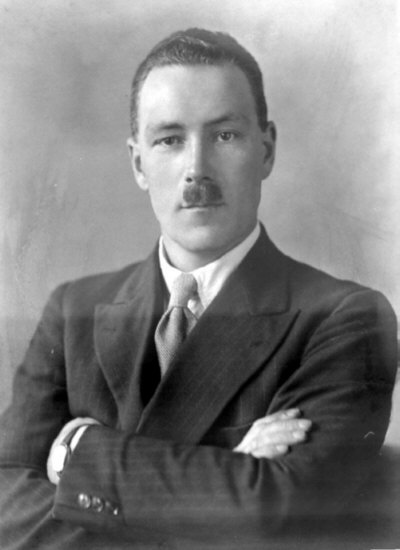
In 1903, Orville and Wilbur test flew the world's first aircraft.
Only 13 years later, in the midst of WW1, the Royal Flying Corps
airfield at Farnborough was the
center of flight research in Britain.
My grandfather, Charles Sandison, kept a flight log as an observer
test flying the latest recconnaisance aircraft modifications.
The following web pages display his personal flight notes from 1916 to 1917.
This site is my small tribute to him and all his WW1 compatriates.
But first a little background...
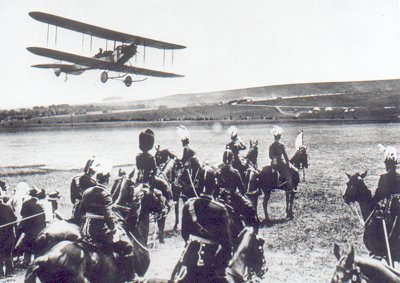
An Historical Perspective of Farnborough and Flying up to the First World War
A 1912 memorandum issued by the Director of Military Operations stated:
"There can no longer be any doubt as to the value of airships and aeroplanes in locating an enemy on land and obtaining information which could otherwise only be obtained by force...
Though aircraft will probably have several uses in war, their primary duty is searching for information."
In 1904, a committee of inquiry was held into British military air operations. It recommended that the Balloon Factory (then located at Aldershot) should stick closely to its brief of developing airships, man-lifting kites and associated equipment but it should change location to a larger site. The south Farnborough site was chosen after lengthy deliberations. The new site was at the eastern end of Farnborough Common and to the west of the Farnham to Bagshot road. The Royal Engineers undertook tree clearing and groundwork whilst contractors erected the buildings. Occupation started in 1905 although it was 1906 before the site was fully functional.
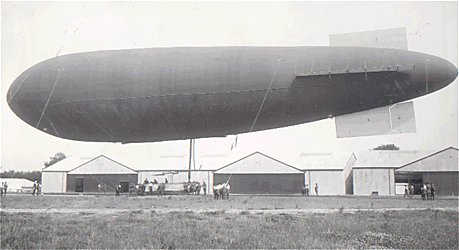
Initially work was concentrated on the development of a new airship for the Army. The airship was of non-rigid design and powered by a 50 hp V-8 engine. The ship, known as Nulli Secundus, was completed on 10th September 1907 and, after two trial flights, she took off on 5 October 1907 and flew to London where she flew over the West End and City before landing at Crystal Palace, unable to return to Farnborough because of a rising west wind. Samuel Franklin Cody, the Chief Kite Instructor at Farnborough, was one of the three onboard. This flight set a record for a non-rigid airship.
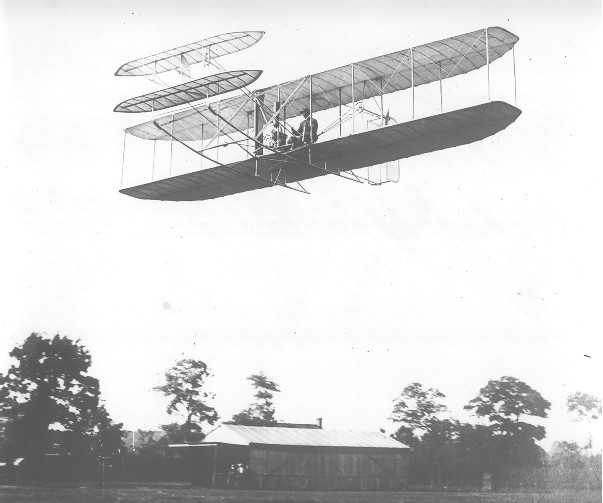
By 1908 the Wright brothers felt that there was more to be gained from displaying their machines and piloting skills in public, than from continued secrecy. They had filed their patents with the U.S. military but there was still widespread scepticism in Europe owing to the brothers publicity-shy attitude. While S.F. Cody and others were struggling to complete the first British aircraft, an aeroplane capable of flights of 25 miles had been sitting in a crate on the docks at Le Havre. This was the 1905 model Wright Flyer, sent on ahead of Wilbur Wright (1867-1912), who arrived in France in May 1908. Wilbur was ready for his first flight in Europe on 8 August. A large crowd was present to watch Wilbur take to the air, which included Louis Bleriot. It was late evening and the air was dead calm. Wilbur was only sensible to be tentative at first. He had not flown for almost three years and nor had the machine he was piloting. Moreover, he had just finished modifying the control mechanism. He gracefully rose to 30 feet, made three smooth sweeping circuits around the racecourse and then landed easily within 50 metres of where he had taken off. As Wilbur stepped out of the Flyer the crowd applauded with wild enthusiasm. All scepticism evaporated in the minute and 45 seconds the flight took.
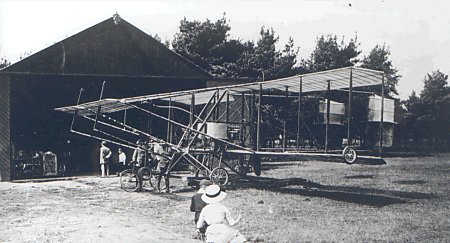
Meanwhile S.F. Cody and others were advancing from work on manned kites and gliders to designing for powered flight. The British Army Aeroplane No. 1 was designed by Cody and built by the Balloon Factory . On 16th October 1908, Cody successfully achieved a powered flight of some 1390 feet in this machine. The flight ended in a crash as Cody tried to avoid a clump of trees. The aircraft was severely damaged but Cody was uninjured. Thus Cody is acknowledged as having made the first heavier-than-air flight in the British Isles. HM Government then summarily terminated Cody's contract as it was now determined there was no future in these flying machines!
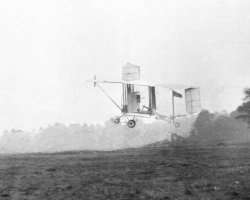
Mervyn O'Gorman was appointed Superintendent of H.M.Balloon Factory in October 1909. He was keen to push into aeronautics despite some official opposition from the War Office. His staff at that time comprised some fifty men and fifty women. A reorganisation took place and the early technical and scientific departments were formed. The Balloon Factory was renamed HM Aircraft Factory in April 1911 (but referred to in correspondence as the Army Aircraft Factory). Its work covered both aeroplanes and airships and it continued to design and produce both. Several balloons (known variously as Beta, Gamma, Delta) were built, tested and rebuilt in the period 1910-1913 until the Royal Navy assumed responsibility for airships on 1 January 1914.
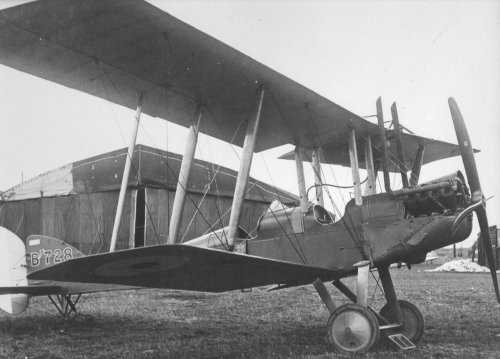
Geoffrey De Havilland began work on his first plane in 1908. Completed in early 1910, with De Havilland at the controls, the plane crashed after flying only 100 feet. De Havilland continued with his second aircraft, the FE-1, was purchased by the British War Office. In 1911 De Havilland worked on a new plane for the Royal Aircraft Factory. The BE-2 flew for the first time in January, 1912. Soon afterwards, the BE-2 set a new British one-passenger altitude record of 10,560 feet (3,912 m). On the outbreak of the First World War, the BE-2 was the standard military aircraft employed by the Royal Flying Corps . The design of the plane was constantly being revised and during the war there were five different versions.

By the end of 1912 the RFC had one squadron of airships and three of aircraft. At the beginning of the war the RFC had 49 aircraft mainly the BE-2, Avro 504, Vickers FB5 and the Bristol Scout. In July 1916 the RFC had a total strength of twenty-seven squadrons (421 aircraft), with four kite-balloon squadrons and fourteen balloons. The squadrons were organised into four brigades, each of which worked with one of the British armies. By the beginning of 1918 the RFC had grown rapidly and it now operated 4,000 combat aircraft and employed 114,000 personnel.
At the formation of the Royal Flying Corps (RFC) in April 1912, a further name change occurred. The newly designated Royal Aircraft Factory was tasked with supporting the RFC by, among other things, testing both British and foreign aeroplanes and engines.
During the period of the First World War, some thirty different types of aircraft were designed and about five hundred actually built at Farnborough. The majority was in prototype form for eventual mass production by private industry. Because of the urgency of the war effort, the factory expanded both in manpower and buildings. Approximately 4,000 personnel were employed by mid-1915 and very long hours were worked.
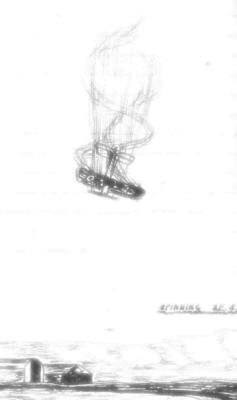
"The Heavens were the grandstands, and only the Gods were spectators. The stake was the World. The forfeit was the Player's place at the table; and the Game had no recess. It was the most dangerous of all sports-- and the most fascinating. It got in the blood like wine. It aged men 40 years in 40 days; it ruined nervous systems in an hour. It was a fast game-- the average life-span of a pilot at the Front was 48 hours. And, to many, it seemed an Age...."